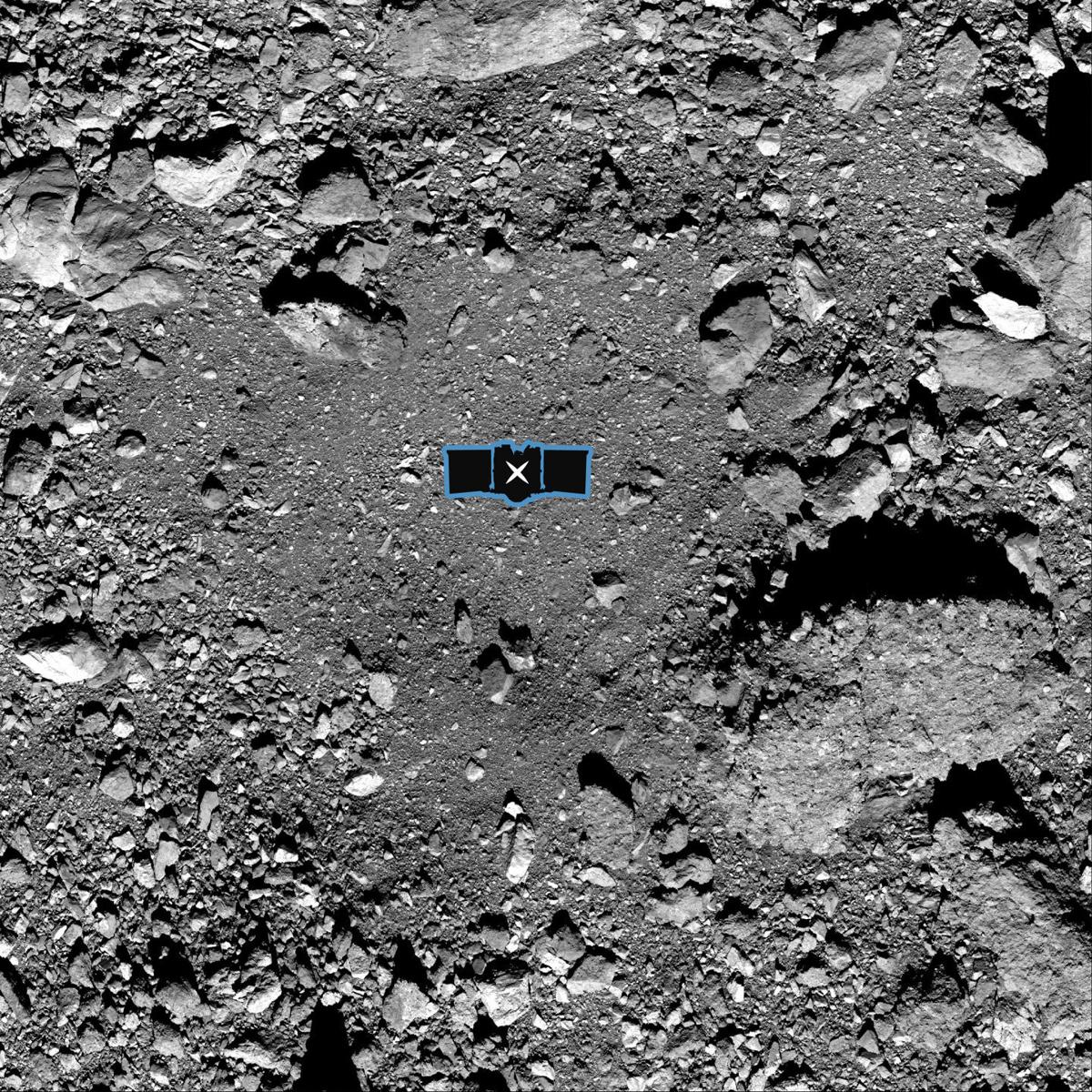After nearly a year of imaging and analyzing the rough surface of asteroid Bennu, the UA-led team in charge of NASA’s first mission to collect a sample of an asteroid has officially designated a collection site.
The announcement, made Thursday, marks the next major step for the OSIRIS-REx mission, which entered orbit around Bennu at the end of 2018 after a two-year journey through space. The selected collection site, called “Nightingale,” is located in a 230-foot crater in the asteroid’s northern hemisphere.
“After thoroughly evaluating all four candidate sites, we made our final decision based on which site has the greatest amount of fine-grained material and how easily the spacecraft can access that material while keeping the spacecraft safe,” said Dante Lauretta, OSIRIS-REx principal investigator at the University of Arizona. “Of the four candidates, site Nightingale best meets these criteria and, ultimately, best ensures mission success.”
At one point, the OSIRIS-REx team had 50 different areas that looked like they could be good potential collection sites. According to Lauretta, the team engaged in a sort of tournament style competition and finally narrowed it down to four — Nightingale, Sandpiper, Osprey and Kingfisher. The team spent the last several months evaluating each site from many different angles in order to identify the option that posed the fewest hazards while still providing the opportunity for pristine samples to be gathered.
The crater where Nightingale is located is believed to be relatively young with freshly exposed rocky surface material, making it an ideal area for picking up a sample. The site is also located in the high altitudes of Bennu’s northern region, which means it stays relatively cool.
“The primary objective of OSIRIS-REx is to bring back organic material and water bearing material from the early solar system,” Lauretta said. “So, being in those high latitudes we think gives us the best chance to preserve that kind of material.”
The collection site also poses some challenges that the team has had to consider. While the crater where Nightingale is located is rather large, the actual collection site is only about 52 feet in diameter, which is much smaller than the team originally envisioned. This means that the spacecraft has to accurately target Bennu’s surface.
In addition, images of the Nightingale site show the area is relatively smooth, but it is also characterized by several large boulders that can cause hazards when the spacecraft attempts to touch down. According to Lauretta, the largest boulder located on the eastern edge of the crater is about 30 feet high.
“Bennu has challenged OSIRIS-REx with extraordinarily rugged terrain,” said Rich Burns, OSIRIS-REx project manager at NASA’s Goddard Space Flight Center. “The team has adapted by employing a more accurate, though more complex, optical navigation technique to be able to get into these small areas. We’ll also arm OSIRIS-REx with the capability to recognize if it is on course to touch a hazard within or adjacent to the site and wave off before that happens.”
Because of these challenges, the team has also selected a backup site, “Osprey,” which is near the asteroid’s equator and doesn’t have as many hazards as Nightingale.
Next Steps
Beginning in January, OSIRIS-REx will work to gather more information on both the Nightingale and Osprey sites, making flights over the areas through the spring. Once these flyovers are complete, the spacecraft will begin rehearsals for its first “touch-and-go” sample collection attempt, which is scheduled for August 2020.
The spacecraft will use an instrument called TAGSAM — the Touch-And-Go Sample Acquisition Mechanism — to collect a sample from Bennu’s surface. Contacting the surface of Bennu for a total of five seconds, the TAGSAM will release a burst of nitrogen gas, causing loose rocks and surface material to be stirred up and directed into a collector in the sampler head.
OSIRIS-REx will obtain at least 2.1 ounces and up to 4.4 pounds of sample. The spacecraft is capable of making up to three sampling attempts if needed.
After collecting the sample, the spacecraft will depart Bennu in 2021 and is scheduled to return to Earth in September 2023.
“Just thinking that we’re going to get this sample back to Earth sends chills down my spine,” Lauretta said.
What’s the big deal?
While NASA has observed Bennu from afar over the last 20 years, the OSIRIS-REx mission is allowing astronomers to do more.
The team is hoping that samples collected by OSIRIS-REx will help answer fundamental questions about the formation of life on Earth and the future of space exploration.
“We think Bennu is a really old object that has been preserved from the earliest parts of our solar system,” said Lori Glaze, director of NASA’s Planetary Science Division. “So, by looking at those samples, we’ll get insights and information telling us about what conditions were like when the solar system formed.”
By sampling the surface of Bennu, the team is looking to find what they believe to be is hydrated minerals and organic materials, which will help them better understand how those types of materials were delivered to Earth and were, perhaps, the seeds for how life began to form on the planet.
“It’s also going to help us better understand what types of resources might be available on these asteroids that are out there as we start to take human exploration beyond the moon,” Glaze said.
According to Glaze, the team also plans to preserve a good portion of the sample from Bennu for future generations to use as more sophisticated instruments and technology become available. Similar to the moon rocks that were recently observed for the first time from the Apollo 17 mission over 40 years ago, the samples collected by OSIRIS-REx could inform future science and space exploration.





